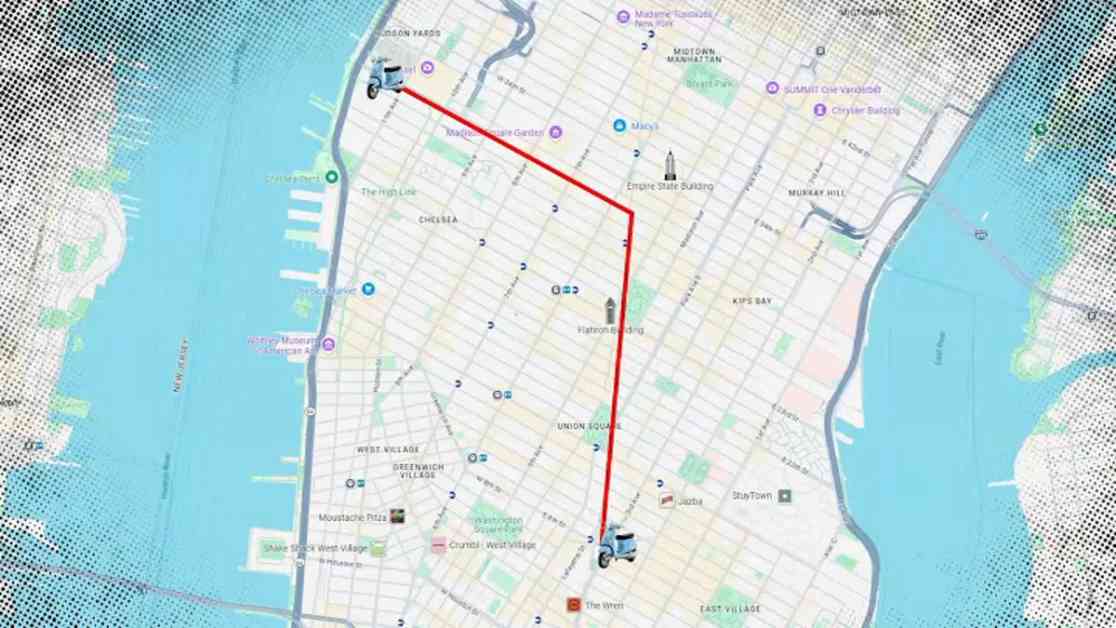When Jesse King received his E-ZPass bill for January, he was taken aback by the presence of four mysterious charges that seemed out of place. As a Manhattan resident who frequently navigates the busy city streets on his trusty Vespa motorbike, King was surprised to see congestion tolls billed on four separate days early in the month. However, King was adamant that all his trips started at a garage on West 30th Street and stayed within the congestion zone boundaries.
Reflecting on the situation, King expressed his confusion to NBC New York, stating, “There’s no record of me leaving the zone and then re-entering the zone.” According to the MTA’s Frequently Asked Questions webpage, traveling within the congestion zone, even along designated roadways like West Street or the FDR Drive south of 61st Street, should not trigger a toll.
After NBC New York’s I-Team brought King’s E-ZPass bill to the attention of the MTA, the agency acknowledged the error and decided to refund the four congestion tolls, each totaling $4.50. Nevertheless, the MTA did not provide a clear explanation as to why these tolls were charged initially or whether similar mistakes had affected other drivers.
While the total sum of $18.00 might seem insignificant, King and other critics raised concerns about the transparency of congestion tolls on E-ZPass bills. Unlike tunnel tolls, which are itemized based on the specific tunnel used, E-ZPass bills lack information about the cameras or intersections responsible for triggering congestion tolls.
### Addressing Transparency Concerns
Rep. Josh Gottheimer, a Democratic candidate for New Jersey Governor and a vocal opponent of congestion pricing, emphasized the importance of transparency for motorists. Gottheimer argued that drivers should have easy access to information about which cameras captured their vehicles incurring congestion tolls below 60th Street in Manhattan.
He highlighted the need for clarity by drawing parallels to toll charges on highways like the New Jersey Turnpike or Garden State Parkway, where drivers can easily identify the exact location where they were charged. Gottheimer’s call for increased transparency comes as the Trump Administration pushes to halt congestion pricing efforts altogether.
The MTA claims that its staff can verify the locations and timestamps recorded by toll cameras when necessary. However, the agency did not respond to inquiries about how commuters could independently determine which congestion cameras triggered specific tolls. This lack of transparency is particularly concerning as federal authorities have ordered the MTA to stop toll collection by March 21st.
### The Future of Congestion Pricing
Despite receiving accolades from public transportation advocates for generating significant revenue for mass transit and improving commute times, congestion pricing faces challenges from the Federal Highway Administration’s directive to cease toll collection. Governor Kathy Hochul and MTA leaders remain steadfast in their commitment to the program, vowing not to deactivate tolling cameras without a court order.
For King, who generally supports the concept of congestion pricing, the issue lies in unexplained charges that could erode public trust in the program, especially amidst ongoing scrutiny from Washington, D.C. King emphasized his compliance with the law, stating, “I think the congestion toll is probably pretty helpful. It is the law, so I follow it. It’s not a big deal. But what’s not appropriate is getting charged when I haven’t left the zone.”
As the debate around congestion pricing continues to unfold, the importance of transparency, accountability, and clear communication remains paramount to ensure the success and integrity of the program.












